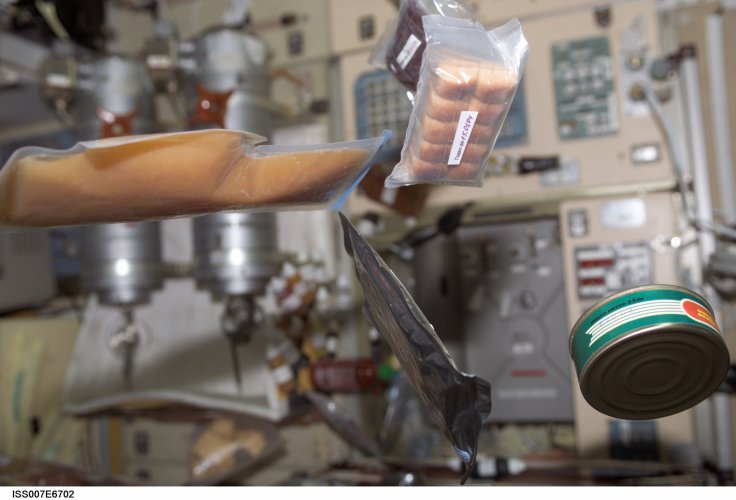
Currently, Elon Musk is planning to colonize Mars and NASA is planning to send another rover to the Red Planet. With all the future plans regarding Mars, it appears that we, the earthlings, are obsessed with what the planet has to offer.
The journey to Mars is not going to be a small one and several scientists are currently busy finding out the side-effects of a long-term space journey. Now, one of the main questions that arise from this situation is that will the astronauts have enough food and drink supply in space to survive the years-long mission?
As per several reports, hydroponic growth labs might be an option, through which astronauts will be able to grow beans and sweet potatoes on the icy cold Red Planet. Won't the kitchen appliances just fly away with half-cooked food in it on the planet with the lack of gravity? No, actually man-made partial gravity would make the things stable just like on the surface of the earth.
Right now, we know that it's possible for the astronauts to normally eat, chew and swallow in outer space, even in zero gravity, just like the same way we do it on earth. The only difference is that the food flies in outer space, however; astronauts do not face any problem in the entire eating process due to that. During the time of the early missions to space, this fact wasn't really clear.
According to Atlas Obscura, NASA scientists at that time had a doubt that humans in space may not be able to eat normally because the peristalsis - the involuntary muscle contractions that move food through the digestive tract – might not happen altogether in space. "I guess they were concerned that in microgravity ... that system might not work without the assistance of gravity," stated a NASA scientist Vickie Kloeris, who is currently the in-charge of the food systems for the International Space Station.
Following this doubt, NASA started conducting tests on astronauts to see if they can eat properly in space during the Project Mercury flights that went on till 1963 from 1961. The scientists started offering a limited collection of nourishment via aluminum tubes. Initially, Mercury flights used to be short. So, the astronauts didn't have to take an entire course of meal.
However, eating in this particular mission became quite critical, as it gathered "gross information as to the effect of null gravity on food ingestion and digestion," stated U.S. Army Natick Research and Development Laboratories, which aided in the several food-designing programmes for different NASA missions, such as Project Mercury.
As per the report, John Glenn took was able to eat his pureed applesauce aboard the Friendship 7 spacecraft (1962) and later, the same year Wally Schirra also went on with the eating plan in Sigma 7, which had orbited earth six times. Schirra perfectly swallowed peaches and soft ground beef.
"I'm not sure what they would have done if that had been a problem. I don't think they had a plan B," said Kloeris. Thank god they didn't, right!
The concept is that because peristalsis works even in gravitational shifts, astronauts in space can eat, chew and drink without any problem. It's just like how we can swallow water even when at an upside down position.
However, eating only soft food becomes monotonous for the astronauts in long space flights. The space food has evolved a lot by now. According to Kloeris, ISS pantry contains around 200 kinds of different drinks and foods – starting from cherry-blueberry cobbler to even frozen shrimp cocktails, all made by the Space Food Systems Laboratory.
As per the publication, hot sauce is one of the most favourite items among the astronauts as several of them suffer from "dulled taste buds" in space, said Kloeris, and this happens because they eat food from a packaged bag and not a plate.
"In microgravity, when you heat something, it can dissipate in different directions. You're in an enclosed environment with a lot of other competing odors, so all of that taken together, it's not too surprising that some crew remembers report that flavor is not as intense up there," said the scientist.
Still, there is one fear which couldn't be overcome during all these years and that is – crumb. Some food items have too many crumbs, which can fly off in the zero gravity and damage any equipment. In the Mercury mission, some food items used to be gelatin-coated so that the crumbs can't fly away.
Also Read: What happens to brain when astronaut travels to space?
So, maybe in the coming years, while completing their journey to Mars in more developed spacecraft along with more advanced types of equipment, all the astronauts would want is a good crusty piece of bread!









